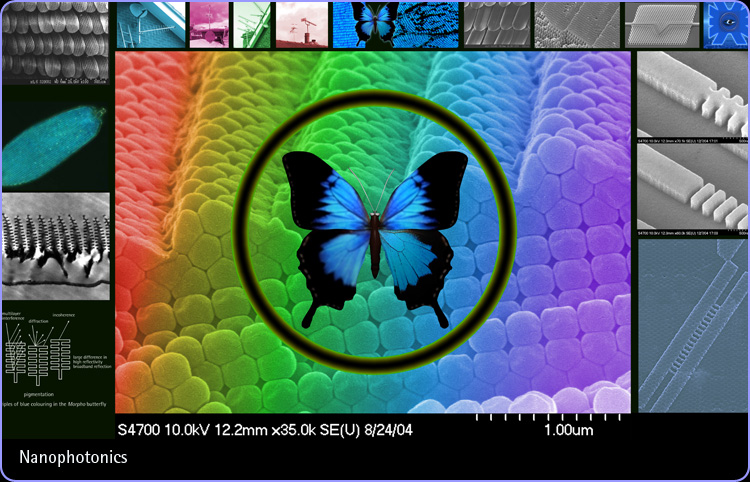Nanotechnology is used to engineer structures that control light – these nanostructures can steer light as in the electro-optic switch or they can be used to select particular wavelengths (colours) of light.
As is the case with many technologies we find that nature got there first. It has recently been discovered by a group at the University of Exeter that the brilliant iridescent colours of some butterflies come from nanostructures present in the scales of the butterfly.
From the shapes of these nanostructures it is clear that they are so called broadband reflectors – the shapes are very similar to the very familiar TV antennas (so called Yagi antenna) – which do a similar job for much longer wavelengths. Also the semi-precious gem, opal, has nanonstructures made up of tiny glass balls – the range of colours reflected by the opal depends of the repeated pattern of the glass balls –wavelengths of light that fit the repeat pattern are strongly reflected.
Nanophotonics is used in the optical communications systems that carry most of the information in the internet. Just like with radio communications, used for TV and broadcast radio, the light spectrum can be split up into many channels. Each channel is assigned to a block of wavelengths and the channels are used to transmit information in parallel thus hugely increasing the information capacity of the system. Nanostructures can be used to select wavelengths and tune in to a channel – again the crucial idea is to make repeat pattern structures that reflect light that fits the pattern.
Data & SEMs: Ali Z. Kohar, Department of Electronics & Electrical Engineering, Glasgow University & Pete Vukusic, University of Exeter.
© 2007 M. Robertson/Nanovisions
|
|

